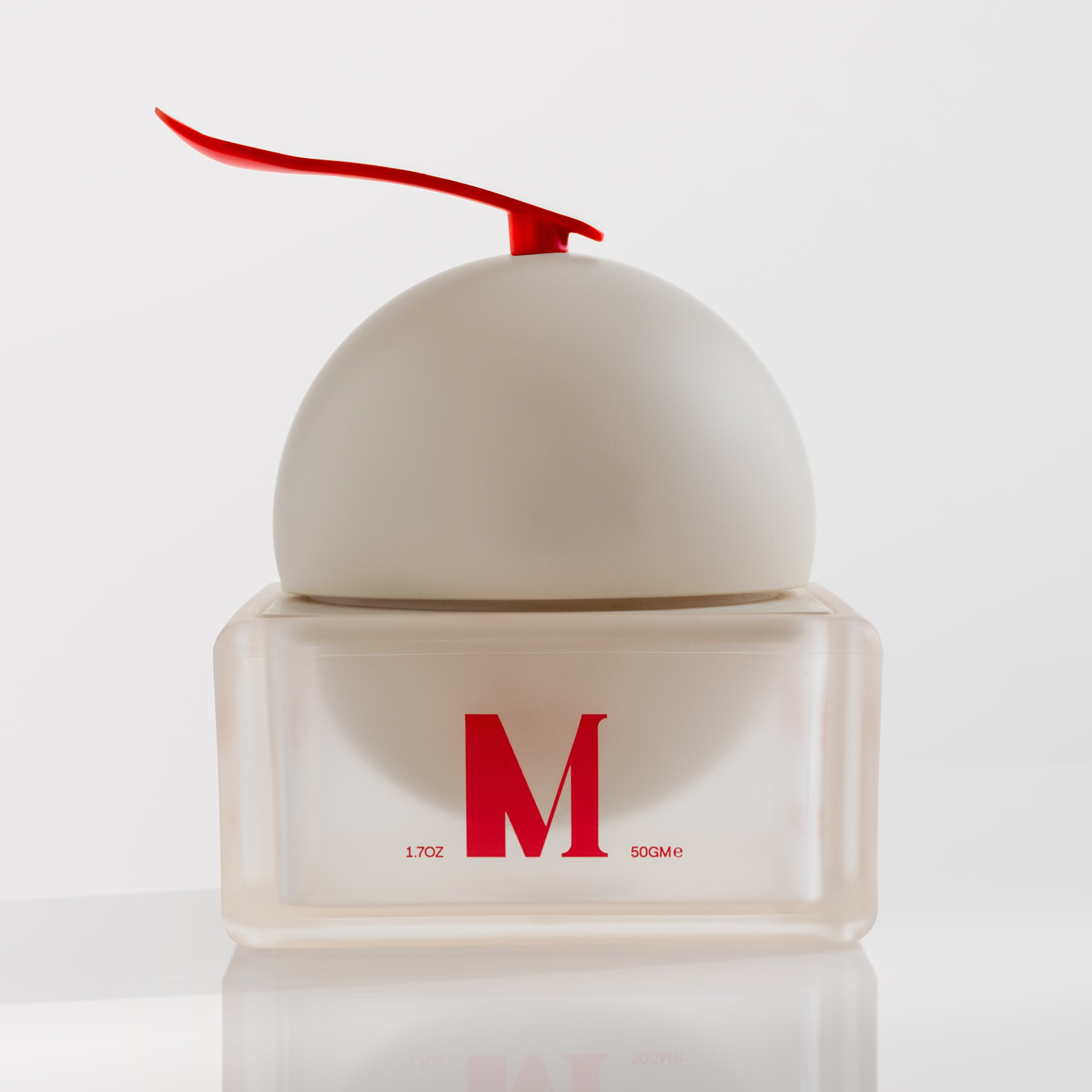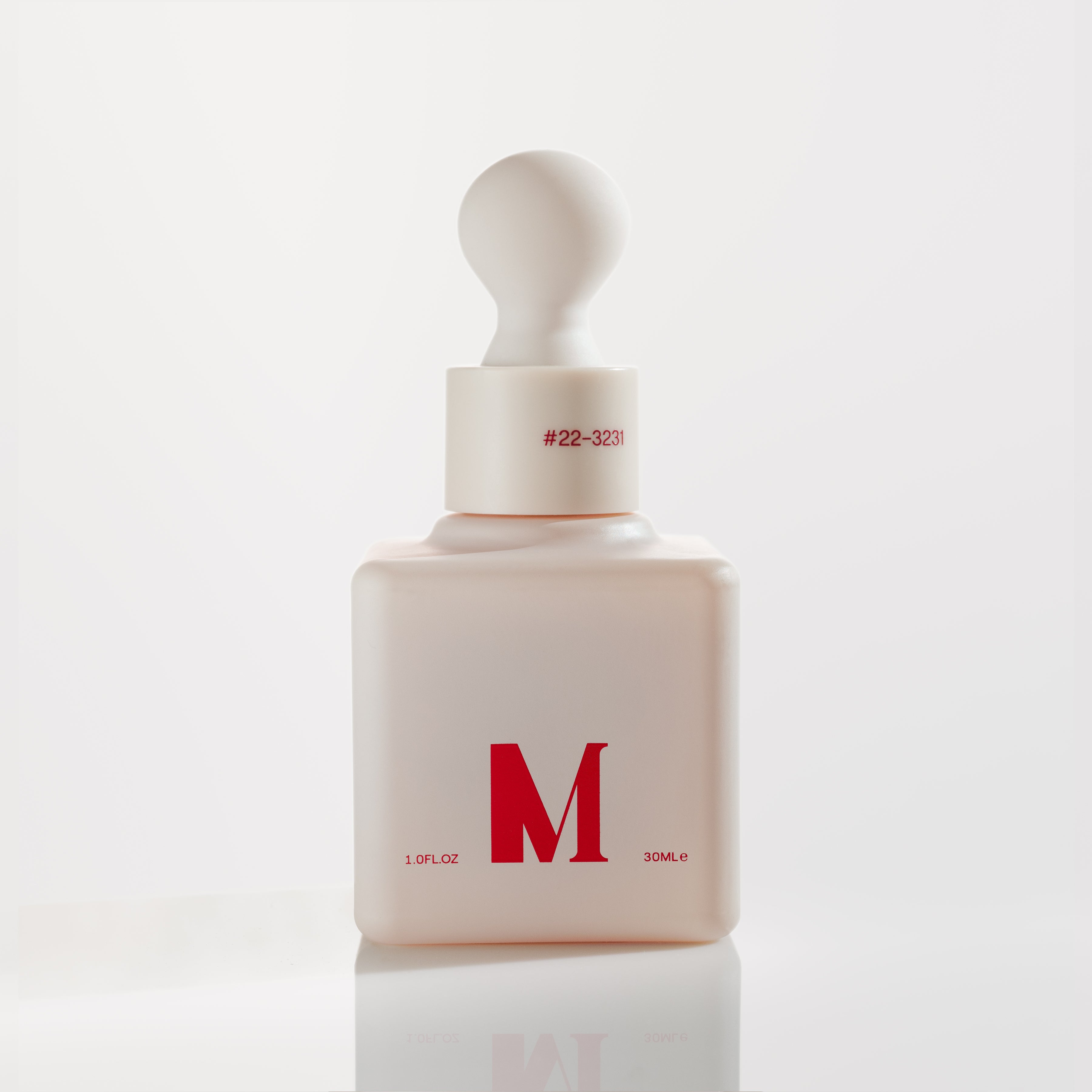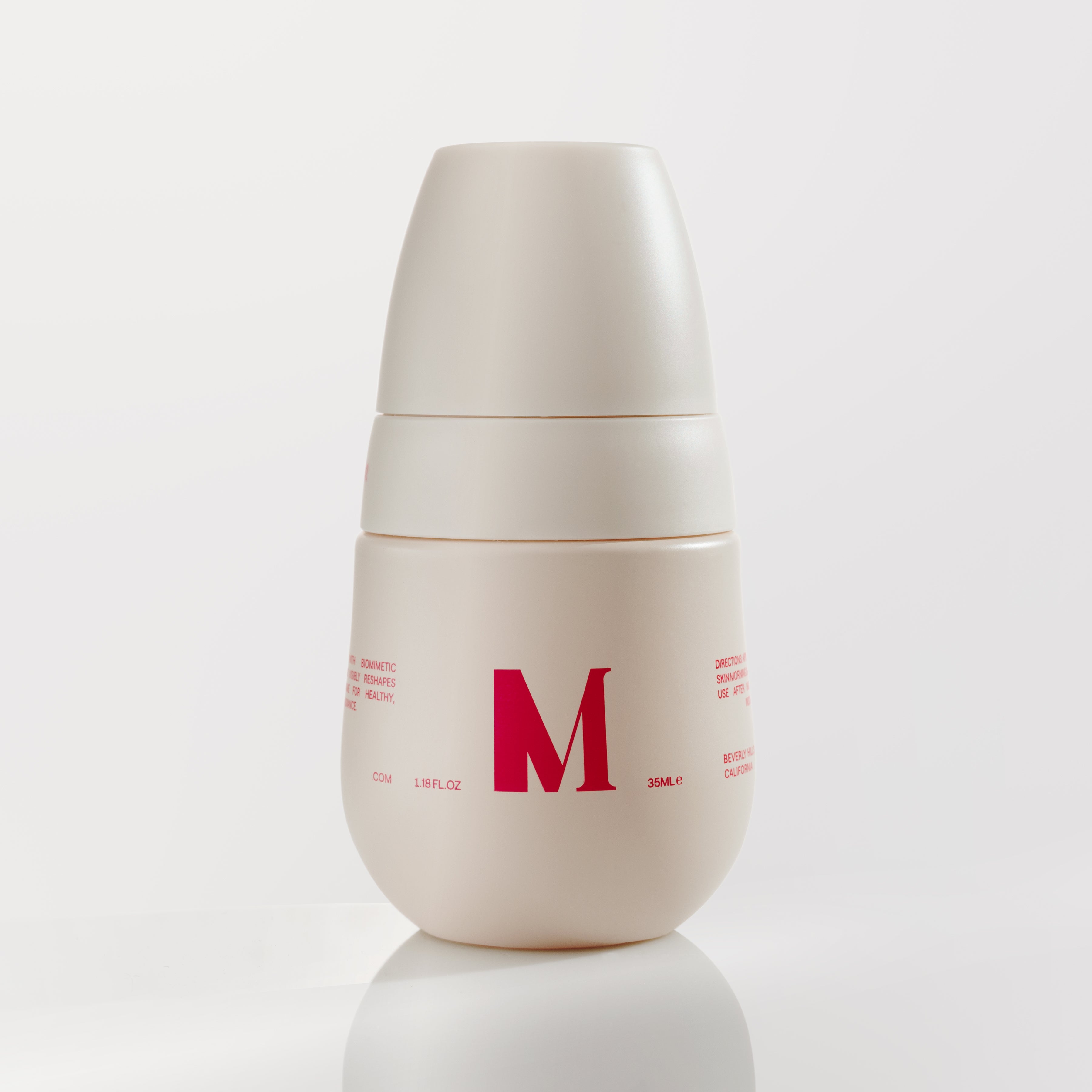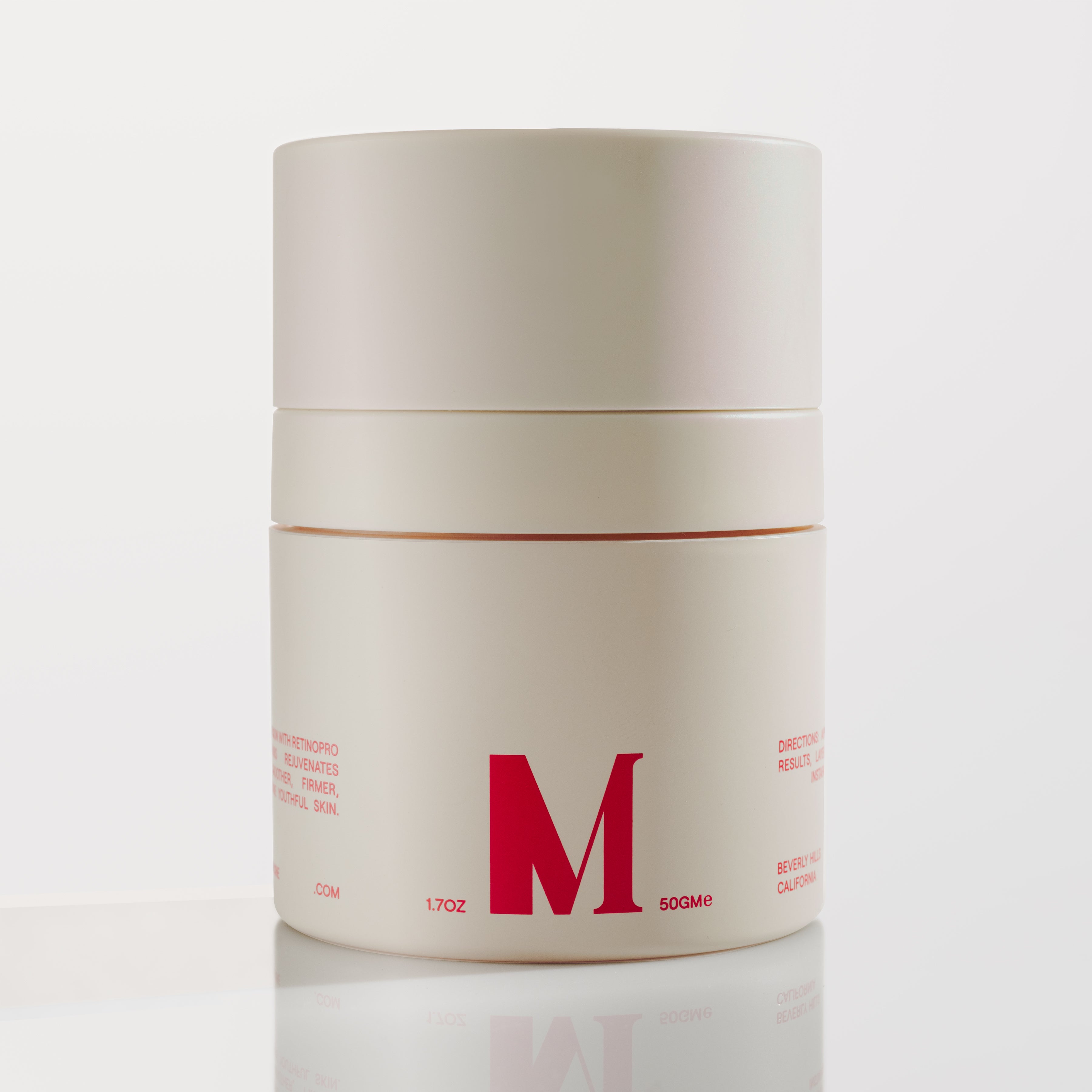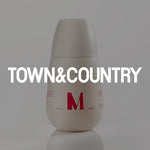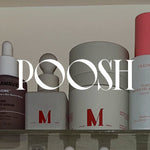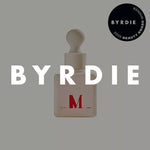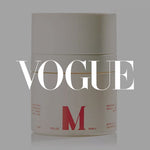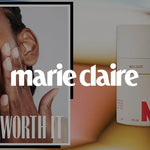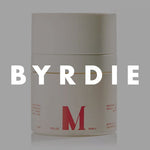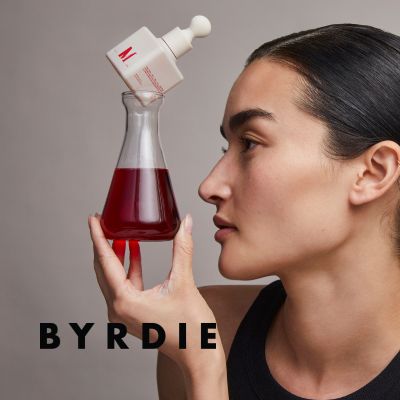 Byrdie / Jill DiDonato
Byrdie / Jill DiDonato
We put Dr. Diamond’s Metacine to the test after receiving a complimentary sample from the brand. Keep reading for our full product review.
When I turned 35, I started noticing changes to the texture of my skin. It wasn’t alarming and didn’t happen all at once, but I did register a shift in skin laxity. As a beauty editor, I’m bombarded with products created to address the physical effects of skin aging—characterized by wrinkling, loss of elasticity, laxity, and a rough-textured appearance. Although I don’t equate the signs of skin aging with a loss of beauty by any means, I will fully admit I’m not comfortable with (the albeit natural) phenomenon of my cells degenerating with each birthday. According to a 2018 study on skin aging published by the National Institutes of Health (NIH), “This aging process is accompanied with phenotypic changes in cutaneous cells as well as structural and functional changes in extracellular matrix components such as collagens and elastin.” As a treatment modality, regenerative skincare science appeals to me. It’s more about youth-boosting than anti-aging in its philosophy—and it’s not just a matter of semantics.
If you haven’t heard of growth factors, allow us to educate you. According to board-certified medical and cosmetic dermatologist, Dr. Marisa Garshick, growth factors “refer to proteins that can be produced naturally by the body to help repair the skin.
Often important for wound healing, growth factors can help to support collagen production and skin regeneration.” In other words, these cells can trigger the production of collagen and elastin, which tend to decrease in our 30s and 40s. Garshick continues, “Growth factors in skincare can help to support collagen production to help firm the skin, as well as tighten its appearance.” Growth factors can be extracted from human skin cells, derived from plants, or bioengineered in a lab to replicate human skin cells. The growth factors in Dr. Diamond’s Metacine Instafacial Collection fall into the final category and have been engineered in a lab.

Dr. Diamond's Metacine
Fast Facts:
Uses: Lifts, softens texture, and adds a radiant glow
Active Ingredients: Plasma: Hexapeptide, tripeptide, polypeptide, copper tripeptide, folic acid ferment, sodium hyaluronate, radish root extract; Emulsion: Niacinamide, hydrolyzed sodium hyaluronate, hexapeptide, nonapeptide, tetrapeptide
Price: $550
About the Brand: Metacine is helmed by Jason Diamond, MD, FACS, a Beverly Hills plastic surgeon known for rejuvenating skin treatments like the Vampire Facial.
What We Like:
- Non-irritating formula didn’t cause redness or scaling
- Immediate improvement in skin texture
- Gradual fading of dark spots
What We Don’t Like:
- The serum and emulsion are meant to be used together, however, the emulsion outlasted the serum
About the Ingredients: Growth Factors Pair Well With Retinoids and Peptides
We asked Garshick about Dr. Diamond’s Metacine formula, which contains a blend of retinoids and peptides. “When combined together, growth factors, peptides and a retinoid can help to support collagen production improving overall texture of the skin as well as helping to tighten the skin and improve the appearance of fine lines and wrinkles.” In other words, the formula is especially beneficial for evening out a complexion and smoothing out textural issues like fine lines and loss of laxity. “The blend of ingredients works to firm the skin while also improving overall tone and radiance,” she explains.
About the Formula: Ideal for Mature and Dry Skin Types
As someone over the age of 35, I fall into the mature skin type. I recently relocated to New York after spending three years living in Los Angeles, and although I’m religious about applying sunscreen, I’ve noticed the proliferation of brown spots making my complexion uneven. Every day for three months, I removed makeup with my favorite micellar water and washed my face with a gentle cleanser. I then followed these steps with the Instafacial Plasma followed by the Instafacial Emulsion. Fun fact: the plasma contains radish root extract, which gives it its red color, but is also a skincare ingredient revered for strengthening the skin microbiome, that's popping up in formulas of late. The serum has a lightweight feel that absorbs readily while the emulsion is super cushiony, living up to its name, instantly cooling your complexion and leaving it soft to the touch.

Byrdie / Jill DiDonato
“Growth factors are already used widely in skincare, and given their significant potential impact and positive results in some short-term studies, I predict they will only continue to grow in popularity."
The Results: Softer Texture, Smoother Skin, and Radiant Glow
As noted, I was militant about applying the plasma and emulsion daily for three months. I didn’t experience any sensitivity from the new routine. “In general, growth factors are thought to be safe for use by all skin types as they tend to be well-tolerated and don’t lead to skin irritation,” notes Garshick. We should mention that some people believe growth factors can be dangerous and lead to the proliferation of skin cells—or in other words, skin cancer. Garshick insists there’s no medical evidence to support this claim, in fact, the data indicates that growth factors aid in regenerative skin health.
We also reached out to Dr. Dendy Engelman, a board-certified cosmetic dermatologist and Mohs surgeon, who notes that there are no studies (of which she is aware) that indicate use of growth factors can lead to the proliferation of skin cancer. "Growth factors are naturally produced by the body, making them safe for all skin types and tones to use topically." She goes on to say that "growth factors are already used widely in skincare, and given their significant potential impact and positive results in some short-term studies, I predict they will only continue to grow in popularity."
“I also noticed that the sun spots on my complexion have begun to fade, becoming less visibly noticeable."
The most noticeable difference in my skin was in its texture, which had more bounce and a silky-skin feel in the morning after a night of the treatment setting in. I should add, I began the treatment at the start of the summer, and ended the trial with a seasonal shift into fall, when my skin typically gets dry due to colder air. After using Dr. Diamond’s Metacine Instafacial Collection, I noticed fewer dry patches and scaliness. As a moisturizing system, this is one of the best treatments I’ve tried. Consider me hooked on growth factors to help boost collagen production; we recommend this product for anyone who has seriously dry skin, regardless of skin age. I also noticed that the sun spots on my complexion have begun to fade, becoming less visibly noticeable. A 2018 study published by the NIH confirms that topical growth factors in skincare are particularly effective in reversing the signs of photoaging (like sun spots). I experienced this from my three months trialing the product, and This evenness helps me to feel more confident about my complexion and embrace a makeup-free aesthetic.

Byrdie / Jill DiDonato
The Value: It’s a Splurge
Products that contain growth factors are expensive—so consider this treatment an investment. We recommend it for anyone willing to spend top dollar for skincare. We think that the dermatologist developed formula justifies the price—and Dr. Jason Diamond is a renowned plastic surgeon, known for youth-boosting skincare treatments. If you’re going to pay for medical-grade products, we think this one lives up to the claims.
Why Trust Byrdie
Jill Di Donato is Byrdie’s Associate Editorial Director and is a beauty editor with over 15 years of experience. She regularly tests five to 10 skincare products each month, and is always on the hunt for the latest innovations skincare to reverse the signs of skin-aging.
In order to help inform this review, she reached out to two leading board-certified cosmetic dermatologists who include:
- Dr. Marisa Garshick, a board-certified dermatologist at MDCS Dermatology and a Clinical Associate Professor of Dermatology at Cornell University.
- Dr. Dendy Engelman, a board-certified cosmetic dermatologist, Mohs surgeon, and a fellow of the American Academy of Dermatology, American Society of Dermatologic Surgery. She is a media expert and known leader in the field of anti-aging skincare.

